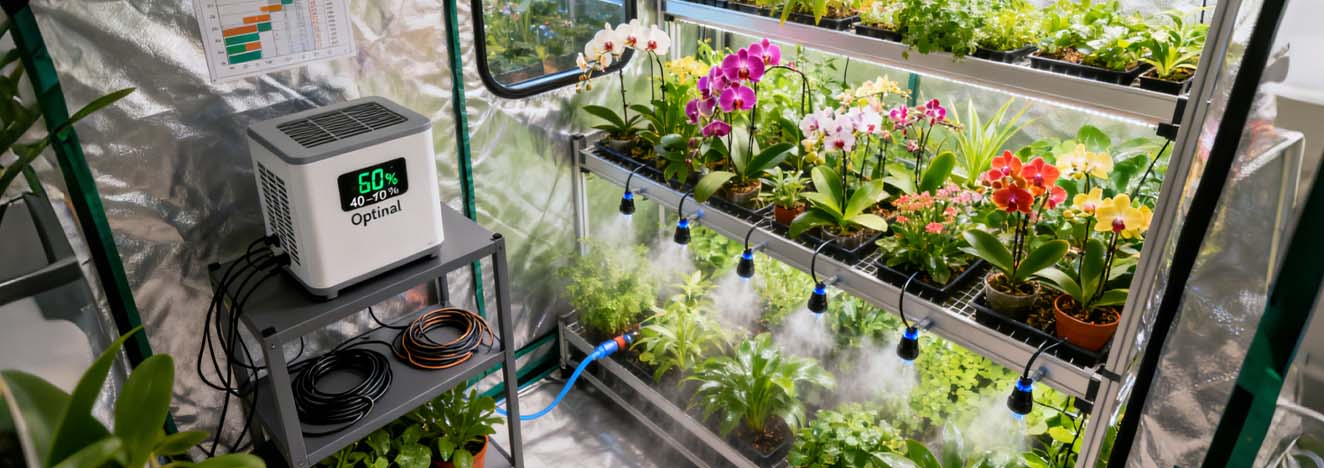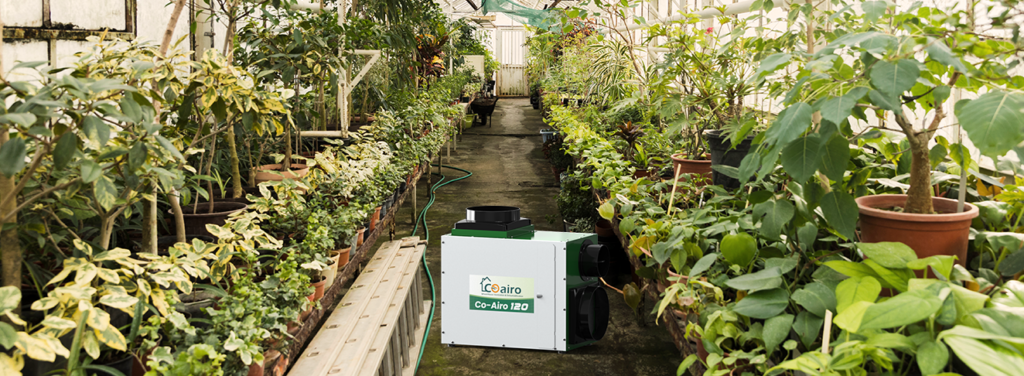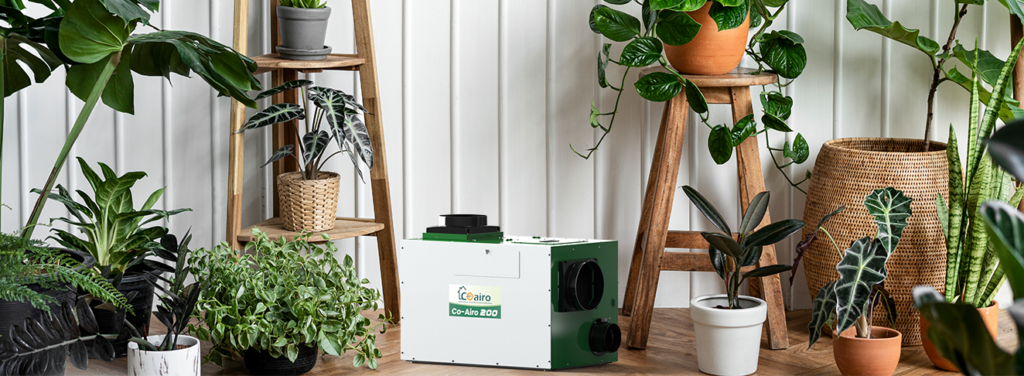Introduction
Indoor farming in a grow tent offers incredible control over plants’ environment, but one challenge many growers face is managing humidity. Excess moisture can lead to mold, mildew, and stunted growth of plants. If your grow tent dehumidifier is not keeping up or you are noticing damp conditions, it is time to diagnose and fix the issue.
This article will guide you through understanding high humidity, identifying its causes, and implementing practical solutions, including using a grow room dehumidifier to create optimal grow tent conditions. With clear steps and practical advice, you will learn how to lower humidity in grow tent environments to ensure healthy, thriving plants.
What Causes High Humidity in Grow Tents?
High humidity does not just happen. Specific issues in your setup are causing the problem. Here are the most common culprits:
Overwatering: Watering plants too often or leaving water in trays increases moisture in the air.
Poor Airflow: Without enough ventilation, humid air gets trapped inside the tent.
Crowded plants: Too many plants in a small space release water vapor, raising humidity.
Hot Grow Lights: The warm temperature from these lights can boost humidity if not balanced with cooling.
Room Environment: If your grow tent is in a humid basement or garage, outside air can seep in.
Understanding these causes helps you pinpoint the problem. The University of Minnesota Extension stated that high humidity invites pathogens like powdery mildew, which can destroy crops.
Diagnosing Humidity Problems
Before you fix the humidity, you need to confirm it is an issue. Here is how to diagnose high humidity in your grow tent.
- Use a Hygrometer: A digital hygrometer measures relative humidity. Check readings morning and night to spot patterns.
- Compare to a Chart: Use a grow room temperature and humidity chart presented by Royal Queen Seeds to ensure relative humidity matches the growth stage of your plants. For example, cannabis needs 65-70% relative humidity for seedlings but only 40-50% during flowering.
- Look for Signs: Condensation on tent walls, water droplets on leaves, or mold spots are red flags.
- Check Plant Health: Slow growth, yellowing leaves, or buds rot often signal excessive moisture.
Regular monitoring with a hygrometer is key to catching issues early and maintaining indoor plant humidity control.
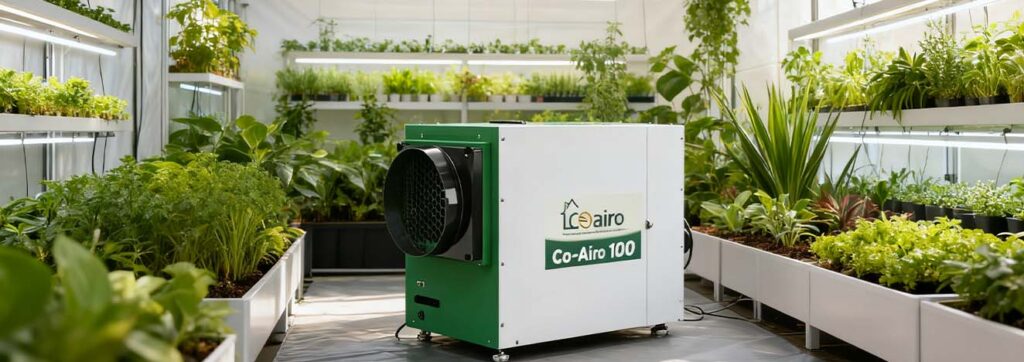
How to Lower Humidity in Your Grow Tent
Once you have diagnosed the problems, here are five practical ways to reduce humidity and prevent mold in a grow tent environment.
1. Boost Ventilation
Good airflow is critical for lowering humidity in grow tent setups. Install an inline exhaust fan to pull fresh air in and push humid air out. Oscillating fans inside the tent keep air moving between plants. Spider farmers suggested refreshing the air every 2-3 minutes to maintain stable humidity. Ensure your exhaust vents are located outside the grow room to prevent the recirculation of moist air.
2. Water Smartly
Overwatering is a common mistake. Check soil moisture with your finger or a meter before watering—only water when the top inch is dry. For hydroponic systems, avoid overfilled reservoirs and ensure proper drainage. Use well-drained pots to reduce standing water as recommended by Hydrobuilder.
3. Try Natural Absorbers
If you are on a budget, place silica gel packs or activated charcoal in a breathable container to absorb moisture. Replace them regularly to maintain effectiveness.
4. Manage Temperature
Temperature and humidity go hand in hand. High temperatures can increase relative humidity, while cooler air reduces it. Use a cooling fan to keep the temperature within the range in your grow room temperature and humidity chart. Avoid letting the tent get too hot, as this can stress the plant.
5. Use a Grow Tent Dehumidifier
A dehumidifier for grow tent use is the most effective way to control humidity. CoAiro whole-house dehumidifiers are an effective solution. Starting with the 90-pint model, these dehumidifiers quickly remove moisture from the air. They work well even in cooler conditions, keeping humidity levels steady to protect plants from mold and stress. You can easily set it up with two airflow levels, side or top vents, and support for multiple ducts. Accessories like hoses, MERV filters, and LCD controllers make operation easy. ETL certified, durable, and backed by a 5-year warranty with expert tech support, they ensure reliable performance for any grow space.
Preventing Future Humidity Issues
To prevent mold in grow tent setups and maintain optimal grow tent conditions, adopt these habits:
- Monitor Daily: Check relative humidity and temperature with a hygrometer and adjust as needed.
- Maintain Equipment: Clean dehumidifier filters and fan blades regularly for peak performance.
- Space plants: Leave enough room between plants for air to circulate freely.
- Adjust for Growth Stages: Lower humidity as plants move from vegetative to flowering stages, as shown in your grow room temp and humidity chart.
Common Mistakes to Avoid
- Skipping Ventilation: A grow room dehumidifier alone is not enough. Pair it with good airflow.
- Overcrowding: Too many plants trap moisture and block air circulation.
- Ignoring Maintenance: Dirty filters or clogged drainage reduce dehumidifier efficiency.
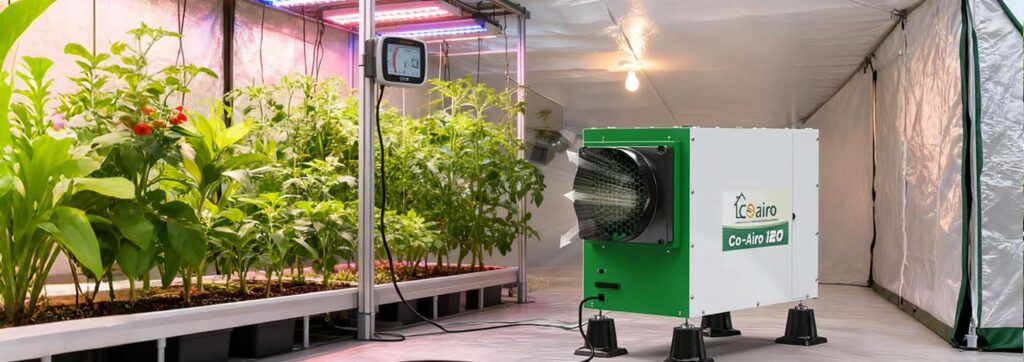
Why CoAiro Dehumidifiers are the Best Choice
When it comes to indoor plant humidity control, Co-Airo 100 dehumidifiers shine. Designed for grow tents and commercial grow rooms, it’s built to solve the unique moisture challenges growers face—here’s how:
- High Capacity: Removes 90 pints of moisture daily and covers up to 2,300 sq. ft. It keeps humidity locked in the 40-70% range, stopping mold growth and keeping your plants healthy.
- Fresh air function: Brings in fresh outside air to boost CO₂ levels in your grow space—critical for photosynthesis. This means thicker stems, lusher foliage, and bigger, denser blooms, not just drier air.
- Flexible setup: Easy to install with side or top vents, supports multiple duct connections, and comes with all needed accessories. No need for extra tools—set it up quickly, even if you’re new to growing.
- Quiet and Efficient: Runs at a quiet 55dB, all while maintaining the steady humidity levels that prevent plant stress.
Unlike standard home dehumidifiers, the Co-Airo 100 grow room dehumidifier is engineered for growers. It handles constant moisture from plant transpiration and watering, making it a reliable pick for commercial cultivators.
As Hydrobulders noted, a quality grow-specific dehumidifier is a game-changer for preventing mold and boosting yields. Co-Airo 100’s durability and consistent performance set it apart from competitors—ensuring your plants get the stable, healthy environment they need to thrive.
Conclusion
High humidity in your grow tent does not have to ruin your crop. Diagnosing the issue with a hygrometer and implementing solutions like a grow room dehumidifier, improved ventilation, and proper watering, you can achieve optimal grow tent conditions. CoAiro’s dehumidifiers offer a reliable and energy-efficient solution to prevent mold in grow tent setups, ensuring your plants thrive. Take control of your grow environment today. Visit www.coairo.com/product-category/dehumidifier to find the best dehumidifier for your grow tent and boost your yield.
